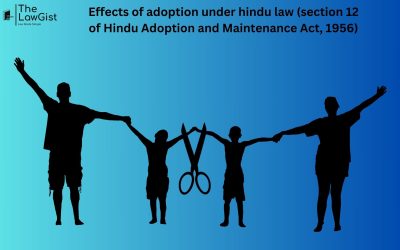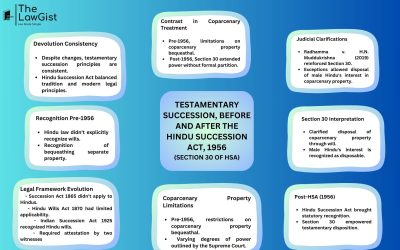INTRODUCTION
The Hindu Marriage Act, 1955 (HMA) stands as a significant legislative measure aimed at codifying and amending marriage laws among Hindus. Enacted to establish uniformity within Hindu marriage practices, the Act addresses various aspects of marital relationships. Section 10 of the Hindu Marriage Act,1955 is particularly pivotal, focusing on Judicial Separation and the alternative reliefs available to spouses encountering difficulties in their marriage.
SECTION 10 OF HINDU MARRIAGE ACT, 1955
Section 10(1) of the HMA delineates the process for seeking Judicial Separation for marriages solemnized under Hindu laws. It empowers a party to file a petition in court, citing grounds specified in Section 13(1) of the HMA. Notably, wives can also leverage grounds from Section 13(2), which will be explored in detail later. Section 10(2) further emphasizes that once a decree under Section 10(1) is granted, the obligation for the parties to cohabit is no longer mandatory. The court, upon application from either party, may rescind the decree.
UNDERSTANDING JUDICIAL SEPARATION
In essence, Judicial Separation involves a court-ordered separation where a couple remains legally married despite living apart. Courts grant this relief only on specified grounds, akin to those outlined for divorce in Section 13(1) of the HMA.
ELIGIBILITY AND FILING A PETITION
Any couple married under customary Hindu laws is eligible to file a petition for Judicial Separation. An aggrieved spouse can approach a District Court under Section 10, and unlike divorce, there is no mandatory one-year cohabitation period. Judicial Separation can be sought at any point during the marriage, providing flexibility for couples facing challenges.
GROUNDS FOR JUDICIAL SEPARATION
Section 13 of the HMA enumerates grounds for seeking Judicial Separation or divorce. These grounds, when presented before the court, form the basis for appropriate action. The grounds include:
- Adultery (Section 13(1)(i))
- Allows a party to seek judicial separation if their spouse engages in sexual relations with another person.
- The burden of proof rests on the party seeking separation.
- Cruelty (Section 13(1)(ia))
- Mental or physical torture causing harm to the other party’s health constitutes valid grounds for Judicial Separation.
- Conversion (Section 13(1)(Ii))
- Permits the aggrieved party to file a petition if the other party converts from Hinduism to another religion.
- Unsoundness of Mind (Section 13(1)(iii))
- Allows separation if a party suffers from a mental disorder making cohabitation impossible.
- Recognizes two types of disorders: mental illness and psychopathic illness.
- Permits separation if a party has an incurable and dangerous form of leprosy.
- Venereal Disease (Section 13(1)(v))
- Allows separation if a party has an incurable or communicable disease undisclosed at the time of marriage.
GROUNDS EXCLUSIVE TO WIVES
Section 13(2) of the HMA outlines grounds exclusively available to wives seeking Judicial Separation:
- Bigamy (Section 13(2)(i)
- Allows a wife to file for separation if she believes her husband has married another woman during their marriage.
- Other Crimes (Section 13(2)(ii))
- Permits the wife to file for separation if certain serious charges like rape, sodomy, or bestiality are committed by her husband.
- Revocation Due to Age (Section 13(2)(iv))
- Enables a girl married before the age of 15 to seek judicial separation before turning 18.
CONCLUSION
In analyzing the concept of Judicial Separation under Section 10 of Hindu Marriage Act,1955,it becomes evident that it offers parties a chance to salvage their marriage and reflect on its status. The one-year gap, absent in divorce proceedings, allows couples to realize the need for reconciliation. Importantly, judicial separation does not terminate the marriage, preserving legal rights such as inheritance and maintenance. The couple remains lawfully married, maintaining major rights during the separation. Moreover, the courts, through Judicial Separation, adopt an imperative approach to mitigate divorces and provide couples with an opportunity for introspection and potential reconciliation.
REFERENCE
1-https://www.hindustantimes.com/cities/others/if-small-disputes-are-viewed-as-cruelty-many-marriages-would-be-at-risk-allahabad-high-court-101701355629221-amp.html – HINDUSTAN TIMES
2-https://timesofindia.indiatimes.com/city/allahabad/the-impact-of-considering-tiffs-as-cruelty-in-marriages/amp_articleshow/105608325.cms -TIMES OF INDIA
3-https://indianexpress.com/article/entertainment/bollywood/om-puri-wife-nandita-opt-for-judicial-separation-after-26-years-of-marriage/lite/ -INDIAN EXPRESS








